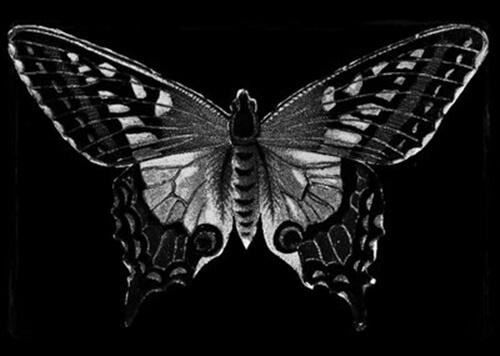The D-Factor and the Nine Traits of Human Evil


Written and verified by the psychologist Valeria Sabater
In general, human beings are biologically predisposed for sociability, empathy, and mutual care. This is how we have managed to survive and progress as a species. But we know that human evil exists and now we’ve discovered its potential origins: the D-factor.
Philip Zimbardo, a social psychologist and the former president of the American Psychological Association (APA), says that evil is more than just a desire to degrade, humiliate, control, and harm others.
We have tons of historical examples of evil. There are mass murderers like Ted Bundy or Andrei Chikatilo, and genocidal tyrants like Hitler and Stalin. There are also people like Charles Manson who influence other people to commit violent crimes.
Evil can be mundane
But evil is devious, silent, and usually not as obvious as the dramatic stories of these mythical names in criminal history. Evil takes shape in more everyday places too: CEOs, politicians, abusive parents, or even children who ruthlessly bully, humiliate, and attack their classmates.
We also know that there are several conditioning factors that play a part in these aggressive behaviors. Nevertheless, neurologists, psychiatrists, and psychologists have always wondered whether there was some common factor to all of them.
It seems like the answer is yes. A few weeks ago, scientists from Ulm University and the University of Koblenz and Landau in Germany published an interesting study where they introduced a term you’ll probably start to hear a lot (if you haven’t already): the D-factor. It’s a compilation of the general personality traits involved in evil behavior.
“Whoever fights monsters should see to it that in the process he does not become a monster. And if you gaze long enough into an abyss, the abyss will gaze back into you.”
-Friedrich Nietzsche-
From Charles Spearman to the theory of human evil
Over 100 years ago, psychologist Charles Spearman brought us a step further in our understanding of human intelligence. According to his two-factor theory, we all have something called a G factor. It’s the general intelligence that gives us most of our cognitive skills.
This factor always plays a part in our intelligent behavior, no matter how specific. Picking up from that idea, cognitive psychologist Morten Moshagen and his colleagues at Ulm University decided to take that even further.
They wanted to see if there was a common factor to evil, similar to the G factor, a scale where some people score high and others low. They studied 2,500 people and discovered some fascinating things. It seems like there is a general component to evil, which they called the D-factor, made up of 9 dark personality traits.
These are traits that show up predominantly in people who behave in cruel, aggressive ways.

The D-factor and human evil
The D-factor is the tendency to put your own interests, desires, and motivations over other peoples’. It doesn’t matter what the circumstances are. The theory also details a wide spectrum of behaviors that are part of human evil.
Plus, it’s worth pointing out that four other studies have been carried out to figure out if the D-factor theory is valid or not. They all proved that it is an accurate way to measure evil.
The nine dark personality traits in the D-factor
- Selfishness: An excessive concern with your own interests.
- Machiavellianism: Manipulative behavior, emotional coldness, and a strategic focus on personal interests.
- A lack of ethics and morality.
- Narcissism: Excessive self-love and the continuous pursuit of your own interests.
- Superiority: The conviction that you have more rights and privileges than others.
- Psychopathy: Lack of emotion and empathy, insensitivity, lying tendencies, and impulsiveness.
- Sadism: Willingly inflicting pain on others through physical, sexual, or psychological aggression.
- Social and material interest: Constant pursuit of rewards, like social support, material things, recognition, and success, among others.
- Cruelty: A tendency to behave cruelly, whether through violence, abuse, theft, and humiliation, among others.
Why the D-factor is important to our understanding of evil
Ingo Zettler, one of the co-authors of the study, says that the D-factor is the dark personality type with all these traits. Thus, the unifying characteristic of human evil is a constant pursuit of your own interests, without any concern for other people. People with this personality type even feel their behavior is justified.
This theory also sets aside the potential neurobiological and social explanations for this personality type. For now, we have a valuable psychological tool for identifying and measuring it when we see it.
Before we go, we want to leave you with a Fyodor Dostoevsky quote: “Nothing is easier than to denounce the evildoer; nothing is more difficult than to understand him.”
All cited sources were thoroughly reviewed by our team to ensure their quality, reliability, currency, and validity. The bibliography of this article was considered reliable and of academic or scientific accuracy.
- Furnham, A., Richards, S. C., & Paulhus, D. L. (2013). The Dark Triad of Personality: A 10Year Review. Social and Personality Psychology Compass, 7(3), 199–216. https://doi.org/10.1002/ijc.31143
This text is provided for informational purposes only and does not replace consultation with a professional. If in doubt, consult your specialist.








